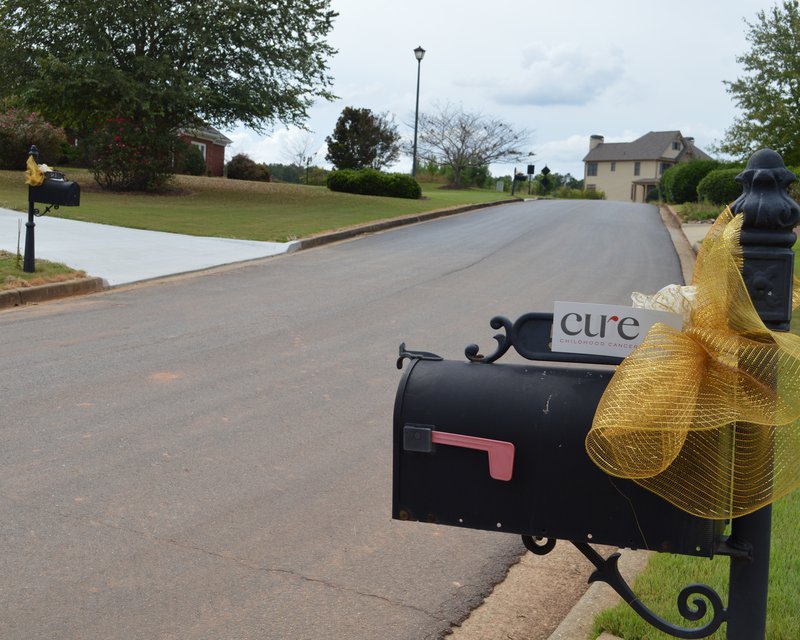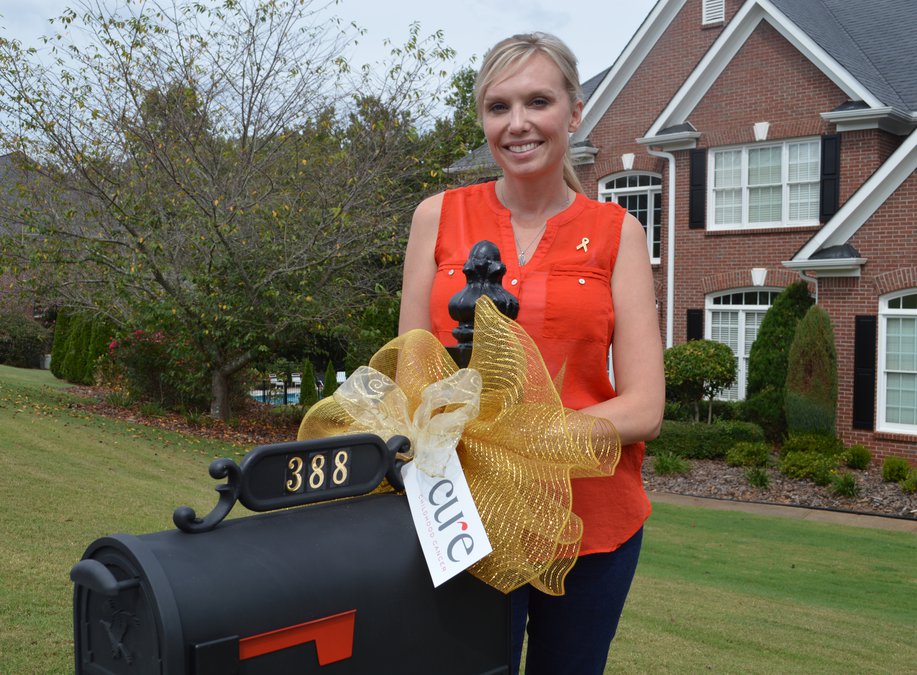When Dawsonville resident Anna Tobolski lost her 13-year-old niece to cancer last year, the suddenness took her by surprise.
Emma died only four months after her February 2017 diagnosis with stage 4 osteosarcoma, or bone cancer.
“We thought she had a hip fracture, her hip was hurting and we took her in for an MRI,” Tobolski said. “The very same day the doctors came in to give us the MRI results, they told us that she had osteosarcoma, that it was stage 4, that there was absolutely no treatment and she had months to live.”
An otherwise perfectly healthy child, Emma was an advanced student who was already studying for the SAT, Tobolski said. A very painful cancer, Emma’s cancer was in her spine and hips, affecting her nervous system and eventually taking away her ability to walk, move her arms, sit up and see.
A mother of five, Tobolski was like a second mom to her sister’s child.
“We were extremely close to her. It’s devastating because you really think of your children as kind of being invincible in some ways. You really never even fathom something like that with your child, and then to be told there’s no treatment,” Tobolski said. “We would have loved just a five percent chance to fight, and she had zero. You basically had to just wait for her to deteriorate.”
Though Emma’s death was a devastating loss to her family, the personal experience showed Tobolski that many forms of pediatric cancer are incurable, underfunded and too many children do not survive.
Emma’s specialist told Tobolski that doctors are still using the same treatment for bone cancer as they were in the 1970s, and that there has only been one drug approved for pediatric cancer in the past 20 years.
“It’s really an injustice to think that the cancer that she got hasn’t had any new treatment since the 70s,” Tobolski said. “50 years has went by and the incidents of pediatric cancer has actually risen 29 percent, and yet they’ve still only approved one drug. They just don’t designate money to research.”
Tobolski also said that in 80 percent of the children that get diagnosed with cancer, when they’re diagnosed it's already metastasized, which means it's already spread to other parts of their body.
“I wonder sometimes even with Emma, she was
already stage 4, it had already spread everywhere, and yet she had no real
symptoms besides muscle pain and ache pain,” she said.

Tobolski said that even though it's a low percentage of kids that get cancer, it only takes one for it to matter to a person. And even though the survival rates for pediatric cancer have increased, the health impacts are still life-long.
“Fertility, heart damage, growth defects, a bunch of different things...and a third of them die from secondary cancers...because of the toxic treatment,” she said.
These statistics were alarming to Tobolski, so she set out to raise awareness about how little research is being done on childhood cancer.
Numbers provided by CURE Childhood Cancer, an Atlanta-based charity dedicated to conquering childhood cancer by funding targeted research and supporting patients and their families, show that less than four percent of the National Cancer Institute’s research budget goes to solving childhood cancer.
Further harrowing statistics from CURE state that one in five children with cancer won’t be cured.
So in honor of September being Childhood Cancer Awareness Month, Tobolski decided to bring CURE’s Gold Bow mailbox campaign to north Georgia. The campaign is simple- large gold bows, made at CURE’s headquarters in Atlanta, are purchased by neighborhoods and business owners and are placed on mailboxes to help spread awareness about childhood cancer.
The campaign has a strong foothold in Atlanta and Savannah, and Tobolski said she wanted to see the bows come to Dawsonville.
Tobolski sent out an email to the homeowners in Gold Creek subdivision, where she lives, as well as solicited local businesses to put the bows out. She even ordered extras for places like city hall and the local public schools to display.
“My goal was 100 bows and we ended up doing about 175,” she said. “Now that they’ve actually been put up I get a lot more calls too wanting them. I would love next year to get additional neighborhoods.”
Though her campaign raised $4,000 just by asking people to put the bows out for the month of September, Tobolski doesn’t see the gold bow program as just fundraising.
“For me, this program is about spreading awareness,” she said. “I would love for people to see gold bows across north Georgia and be like ‘what are these gold bows for?’ because I just think it's imperative to saving our children.”
Purchases of gold bows will help CURE fight childhood cancer and spread the message throughout the community. In the past 12 years, CURE has contributed more than $25 million to research aimed at finding safer and more effective treatments for cancers that affect children.
CURE focuses on funding research in Georgia
and throughout the country.

Last year, the charity announced a $4.5 million gift to support the creation of a new Aflac Cancer Center Precision Medicine Program at the Aflac Cancer and Blood Disorders Center of Children’s Healthcare of Atlanta.
“We are so grateful to CURE for this generous gift and their continued support of our patients and researchers as we work to develop new treatments for childhood cancer,” said Douglas K. Graham, M.D., Ph.D., director of the Aflac Cancer Center and professor of pediatrics at Emory University School of Medicine in a press release last August. Graham is slated to lead the Precision Medicine Program.
“Our hope is that we will be able to share the treatments and protocols developed through our program with centers around the country as our new approaches are adopted elsewhere,” he said.
“This is where you want the research to start going toward so that it's not toxic and it goes specifically towards a certain cancer,” Tobolski said. “As wonderful as some of the other programs are, like St. Jude’s which is such a wonderful hospital, the Aflac center is the only one doing research for actual new treatments or new medicines.”
Kristin Connor, CURE Childhood Cancer’s executive director, said in the press release that she was excited to grow the long standing relationship with the Aflac Cancer Center.
“CURE’s mission is to drive innovative childhood cancer research that will move the needle closer to therapies with fewer side effects for children with cancer, and, eventually, cures,” Conner said. “We believe bringing precise medicine capabilities to Atlanta is a very important step in advancing our mission.”
The bows have been up for around two weeks, and Tobolski has already seen huge interest from the community, and has high hopes for expanding the campaign next year.
“I’ve had a lot of really positive responses,” Tobolski said. “To me, true awareness is sharing information that invokes action. We had a visitor that had come through the neighborhood...they had saw the gold bows and she ended up calling me and we had a long talk, and she was saying that not only did she want a gold bow but she also said that she was going to run in St. Jude’s marathon in December in Emma’s memory and raise some money. Sometimes you don’t know how you can impact people and sometimes it's a silly as gold bows.”
If any individual, neighborhood or business is interested in having a bow next year, Tobolski said they can contact her at annatobolski@gmail.com to be put on the list.
For more information about CURE visit curechildhoodcancer.org.

